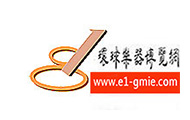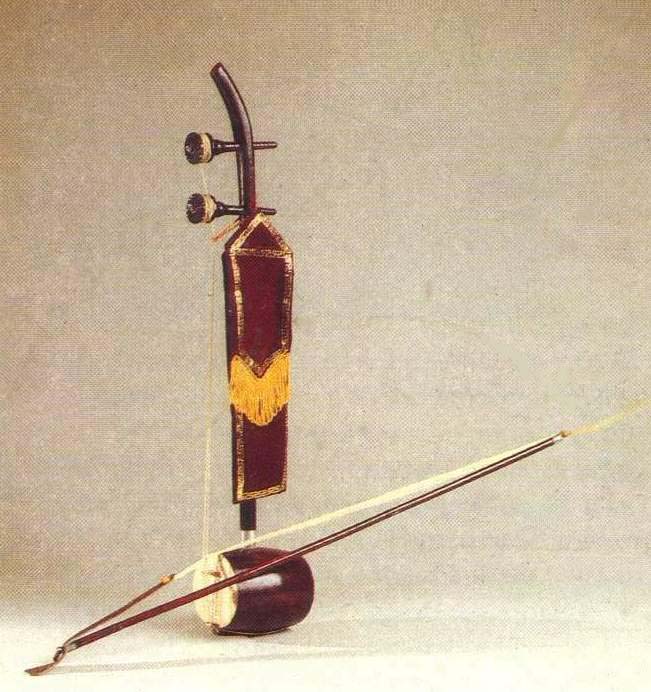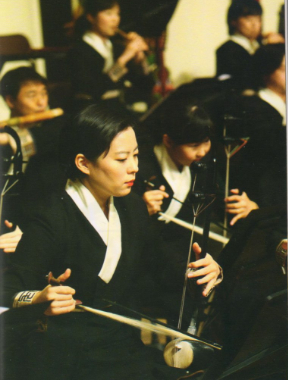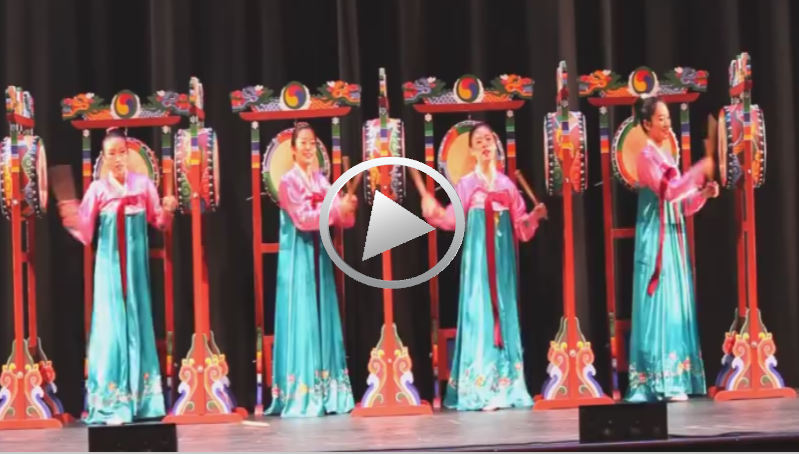奚琴
擦奏弦鸣乐器。现今二胡的祖先,盛行于唐代,共鸣筒一端蒙木板,轸子插在琴杆上的方向与现二胡相反,弦缚在轸子手握的一侧。奚琴最早是古代少数民族奚人的乐器。早期的奚琴用竹棒击奏或擦奏,后发展成用马尾弓擦奏。
现今福建南音的“二弦”仍保持着这种形制。韩国至今藏有我国宋代传去的奚琴。朝鲜音乐工作者把奚琴改革成民族乐队中的主要拉弦乐器,组合成高-中-大-低等系列化声部。
Haegum: Two-Stringed Fiddle
Friction chordaphone. The Korean fiddle haegum, also call xiqin in Chinese (hae or xi was the name of a Tartar tribe), was the ancestor of Chinese erhu fiddle. Popular in China’s Tang Dynasty (618-907), the instrument had its sound box covered with a board and its string tied to the holders of the two pegs, not to the tip end as in the modern erhu. The early type, stricken or scraped with a bamboo stick, not with a horsehair bow as now, still can be found in the performance of erxian two-string fiddle for the Fujian nanyin (south music) ensemble. The ancient types of China’s Song Dynasty (960-1279) are kept in Korea now. Korean musicians made some improvement on the instrument, making it one of the major strings in the traditional orchestra, to form a series from treble to double bass.
文章版权归原作者所有,如有侵权请告知,将立即删除。
The copyright of the article belongs to the original author.
未经允许不得转载:環球樂器博览网 » 奚琴 Haegum: Two-Stringed Fiddle
 環球樂器博览网
環球樂器博览网


评论前必须登录!
登陆 注册